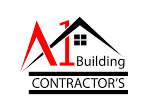When embarking on a residential construction project, understanding the local residential construction bylaws is crucial. These regulations are designed to ensure that buildings are constructed safely, sustainably, and in harmony with the community’s established standards. Bylaws can vary significantly between different municipalities and are influenced by factors such as local climate, historical preservation efforts, and urban planning initiatives.
Key areas covered by these bylaws include zoning laws, which dictate the types of buildings that can be constructed in specific areas, and building codes, which set the standards for construction materials, structural integrity, and safety features. For those interested in adding a new structure, like an accessory dwelling unit (ADU), it’s essential to check whether your property is zoned for such additions and what specific requirements must be met.
Moreover, compliance with environmental regulations is increasingly becoming a priority. These may involve energy efficiency standards, water conservation measures, and the integration of green building practices. Failing to adhere to these bylaws can result in delays, fines, or even the need to halt construction entirely.
Before starting your project, it’s advisable to consult with a local expert or your construction contractor to ensure all bylaws are correctly interpreted and applied. At A1 Building Contractors, we specialize in navigating these complexities to help you achieve your dream of building an accessory dwelling unit seamlessly and legally.
Importance of Compliance in Construction
Compliance with residential construction bylaws is not merely a bureaucratic hurdle; it is a fundamental aspect of successful construction projects. Adhering to these regulations ensures that your project not only meets legal requirements but also enhances safety, sustainability, and community well-being. When builders comply with bylaws, they help to mitigate risks related to structural failures, which can lead to costly repairs or, worse, endanger lives.
Furthermore, compliance can safeguard property values. Properties that are built or renovated in accordance with local laws are more likely to maintain or increase their value over time. This is because they meet the community’s aesthetic and functional standards, making them more attractive to potential buyers or tenants.
Non-compliance, on the other hand, can lead to severe consequences. These may include hefty fines, legal disputes, and in some cases, the demolition of non-compliant structures. Such setbacks not only inflate project costs but also delay timelines, impacting financial planning and return on investment. Additionally, failing to comply can tarnish a builder’s reputation, making it difficult to secure future projects.
Common Challenges and Solutions
Navigating the complexities of residential construction bylaws can present a range of challenges. One of the most common issues is the interpretation of zoning laws. Many builders and homeowners find themselves confused by the intricate details and varying restrictions. A proactive approach to this challenge is consulting with a knowledgeable local planner or lawyer who can help clarify and interpret these laws effectively.
Another significant challenge is ensuring compliance with building codes. The technical nature and frequent updates of these codes can make it difficult for builders to stay compliant. A practical solution is to engage with certified inspectors early in the planning stages. These professionals can provide insights and identify potential compliance issues before they become costly problems.
Handling environmental regulations is also challenging, especially with the increasing emphasis on sustainability. Builders may face restrictions related to energy efficiency, waste management, and environmental preservation. To address these challenges, integrating green building practices and sustainable materials can not only ensure compliance but also enhance the long-term value and appeal of the property.
Lastly, the subjective nature of design and aesthetic guidelines can lead to disputes with local authorities or neighborhood associations. To mitigate this, it is advisable to involve an architect or designer who is familiar with local design trends and guidelines, ensuring that the project aligns with community standards.
By addressing these challenges head-on with the right strategies and expert advice, builders and homeowners can navigate the regulatory landscape more effectively, leading to successful and compliant residential construction projects.
Steps to Ensure Bylaw Compliance
Ensuring compliance with residential construction bylaws is crucial for any successful building project. The first step is conducting thorough research on local bylaws before initiating any construction activity. This involves reviewing zoning regulations, building codes, and environmental policies specific to the project’s location. Utilizing official municipal websites or consulting with local authorities can provide up-to-date and relevant information.
Once you’ve gathered all necessary data, the next step is to develop a comprehensive project plan that integrates these requirements. This plan should address all potential compliance issues, including zoning limitations, height restrictions, and permissible building materials. Engaging with experienced architects or planners during this phase can ensure that the design aligns with the bylaws.
Securing the appropriate permits is a critical step. This involves submitting detailed plans and applications to local authorities, often accompanied by fees. It’s important to account for potential waiting periods and ensure all documentation is accurate and complete to avoid delays.
During the construction phase, regular inspections are vital. These inspections, conducted by certified professionals, can help identify any non-compliance issues early, allowing for timely corrections. Maintaining open communication with inspectors and addressing their feedback promptly is essential for smooth progress.
Finally, maintaining a detailed record of compliance, including permit approvals, inspection reports, and correspondence with authorities, can be invaluable. Not only does this documentation help track the project’s compliance status, but it also serves as evidence of due diligence, which can be crucial in resolving any future disputes or inquiries.
As these trends indicate, staying informed and adaptable is key to navigating future regulatory changes. If you’re considering building an accessory dwelling unit or embarking on any construction project, partnering with knowledgeable professionals can ensure compliance with current and future bylaws. At A1 Building Contractors, our expertise in understanding and implementing the latest regulations can be your invaluable asset in achieving a successful build.

Leave a Reply
You must be logged in to post a comment.